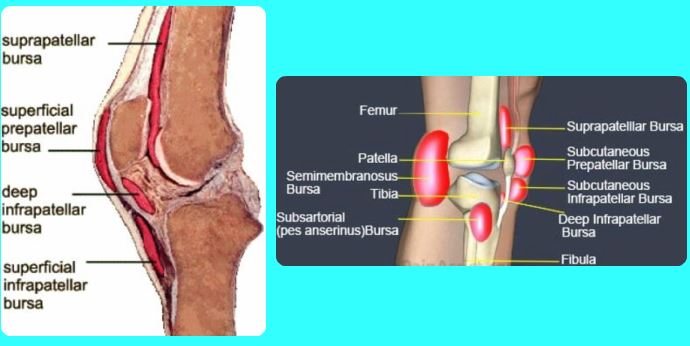Symptoms, Causes, and Treatments for Prepatellar Bursitis

Prepatellar bursitis refers to inflammation of the prepatellar bursae in the front of the thigh. It is usually characterized by swelling in the thigh, which is typically tender to touch and which does not restrict the range of movement of the thigh joint
Prepatellar bursal inflammation occurs in two ways. It can occur as a result of excessive wear and tear on the joints or tendons that are located in the thigh. It can also occur as a result of a deficiency in the production of bursin, the adhesive that helps to hold the tissues together. In either case, this condition may require treatment to relieve pain and reduce swelling.
The most common treatment for this condition is orthotics that help to maintain proper joint mobility and decrease pain associated with the condition. Non-steroidal anti-inflammatory drugs (NSAIDs) such as ibuprofen, acetaminophen, and naproxen are also helpful and may be prescribed by a doctor when other treatment methods have been tried without success.
If you suspect you have an explosive disorder, it is important to see your doctor right away. If you experience symptoms such as pain, instability, stiffness, soreness, and swelling, you should make an appointment with your doctor to determine the cause. Your doctor may order various tests to rule out other conditions besides bursitis, such as arthritis. If you have arthritis, it may be worth getting it tested to determine the best course of treatment.
The pain caused by this condition can be difficult to live with. A number of exercises have been developed to help relieve pain, as well as some dietary changes. This may include cutting back on foods that cause discomfort, such as fatty foods.
Other things that are often prescribed for bursal disorders include a series of physical therapy exercises and stretching aimed at the affected areas. If you are unable to exercise on your own, you can use massage chairs. You can also use heat and ice to reduce discomfort and swelling.

Bursitis in the knees, ankles, hips, and thighs is not life threatening, but it can cause severe pain and inflammation. If left alone, the state will resolve itself
However, if you have this condition and experience any of the following symptoms, you should see your doctor immediately for diagnosis and possible treatment. The doctor can examine your condition and recommend a course of action, and discuss the best ways to prevent or treat any problems in the future. Bursitis of the legs is relatively common, so the chances of identifying the cause are high. Once diagnosed, a qualified doctor can advise you on how best to manage this condition and how to prevent future complications.
Pain experienced while exercising is common with bursitis. In some cases, your doctor may recommend that you take a break from your activities to reduce the pain. Some people are not affected by this condition at all, but may be susceptible to pain if they overdo their exercises. If this happens to you, rest and a warm bath may be recommended.
The pain usually increases during the day and decreases at night. Rest is recommended for those who have pain. It may be helpful to increase your level of activity or to wear a splint at night when sleeping.
Bursitis in the knee will decrease as the bursa healing process occurs. As the bursa is replaced, you may experience pain and/or swelling if your activity is too strenuous for the condition. As your bursa grows larger, your knee will become more likely to develop arthritis. The pain may be particularly intense during your workout, but can often disappear during rest.
There are many treatment options available for those suffering from bursitis. Physical therapy exercises and stretches are often recommended to reduce the pain and the duration of the condition. Stretches that involve your lower and upper legs are also recommended, but these are generally not necessary for most people.

